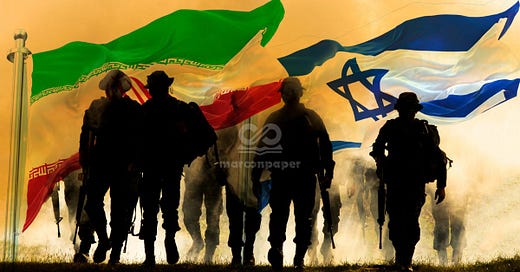Iran vs. Israel Military Power in 2024: Who Has the Upper Hand?
As geopolitical tensions simmer across the Middle East, Iran and Israel’s military power continues to be a focal point of analysis for 2024. Both nations are key players in the region, and their military capabilities highlight two distinct approaches to defense. Israel, with its $24.4 billion military budget, significantly outspends Iran’s $10 billion, leveraging this to build a more technologically advanced and efficient military force. In contrast, Iran relies heavily on its manpower and conventional forces, boasting 610,000 active personnel compared to Israel’s 169,500.
Ground Forces Comparison
On the battlefield, Iran holds a numerical advantage in key areas such as tanks and artillery. Iran’s 1,513 tanks dwarf Israel’s 400, and it has more than 6,798 artillery units compared to Israel’s 530. Additionally, Iran maintains 1,250 APCs/IFVs, outnumbering Israel’s 790. However, Israel compensates for this gap with superior technology and highly trained personnel, which often prove more effective than sheer numbers.
Air Superiority
When it comes to airpower, Israel’s superiority is evident. Israel operates 340 combat aircraft, including advanced models such as the F-35, which provide a decisive advantage over Iran’s 288 aircraft. Israel's air force is not only larger but also more advanced, integrating cutting-edge systems that allow it to maintain air dominance in potential conflict scenarios.
Naval Strength and Intelligence Capabilities
Naval capabilities also reveal important differences. Although Iran fields more patrol vessels (70 compared to Israel’s 51), Israel’s possession of 5 attack submarines—versus Iran’s 1—gives it a critical advantage in maritime warfare. Additionally, Israel’s 8 operational satellites far outnumber Iran’s 2, providing superior intelligence and reconnaissance capabilities that are essential in modern warfare. These satellites enhance Israel's ability to monitor regional threats and conduct precision strikes.
Strategic Strengths
Iran’s military strength relies heavily on asymmetric warfare, leveraging regional proxy forces and its large missile program. These strategies enable Iran to compensate for its technological shortcomings. However, Israel’s technological edge, combined with strong alliances, particularly with the United States, positions it as a dominant force in the region. Israel’s advanced defense systems, such as the Iron Dome, provide protection from missile attacks, further strengthening its military posture.
What is Hamas? A Simple Guide to Palestine’s Liberation Group
While Iran boasts greater manpower and conventional ground forces, Israel’s technological superiority in air defense, naval warfare, and intelligence gives it a critical edge in modern conflict scenarios. The balance of power between these two rivals reflects a clash between numbers and technology—a dynamic that could influence the outcome of future conflicts in the volatile Middle East.
This comparison underscores the complexities of military power in the region. In the face of evolving threats and shifting alliances, both Iran and Israel will continue to shape the future of regional security.
Key Highlights:
- Military Budgets: Israel’s $24.4 billion vs. Iran’s $10 billion.
- Manpower: Iran leads in personnel (610,000 vs. 169,500).
- Technological Edge: Israel dominates in air defense, naval capabilities, and intelligence (8 satellites vs. Iran’s 2).
Stay updated with more in-depth geopolitical analyses and military comparisons by subscribing to my Substack.
#IranVsIsrael #MilitaryStrength #MiddleEast #2024




